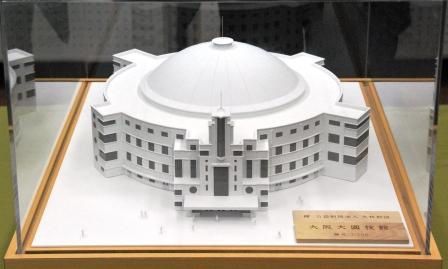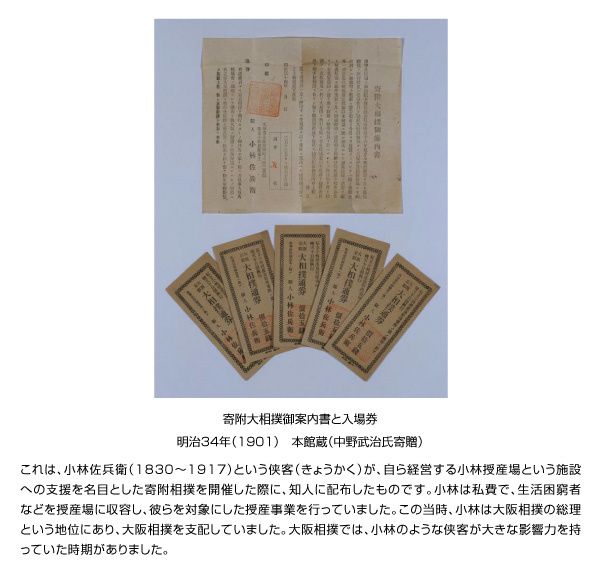Merci http://ajw.asahi.com/article/behind_news/social_affairs/AJ201505150011
Osaka intensifies campaign for World Cultural Heritage status
Political opponents have temporarily set aside their differences. Financial institutions are venturing into uncharted territory. Banners are being waved, and leaders are rallying behind slogans of “pride.”
Osaka Prefecture, with its persistent rivalry against Tokyo hovering in the background, is sparing no effort in its campaign to have a group of ancient tombs in the prefecture listed as a UNESCO World Cultural Heritage site.
But Osaka, the only prefecture in the Kinki region with no UNESCO-recognized cultural heritage site, faces a fierce battle with three other areas that have also stepped up their campaigns. The Cultural Affairs Agency this summer will choose only one group of cultural properties for recommendation to the Paris-based U.N. organization.
For Osaka Prefecture, listing would provide Kansai, the region in and around Osaka, with a status it has long craved—and also the expected economic benefits.
The prefecture’s candidate, the Mozu-Furuichi Kofungun Ancient Tumulus Clusters, spans the cities of Sakai, Habikino and Fujiidera. It consists of nearly 90 tombs, including the 486-meter-long tomb of Emperor Nintoku, which was built in the fifth century and is now regarded as one of the largest tombs in the world.
On March 30, 45 lawmakers elected from constituencies in the Kinki region held a meeting in Tokyo to establish a group that will promote the ancient tumulus clusters as a World Heritage site.
The lawmakers chose Sadakazu Tanigaki, secretary-general of the ruling Liberal Democratic Party, as chairman of the group.
“Tokyo is becoming reinvigorated due to (preparations for the 2020 Summer) Olympics. Kansai must not lose out. We have to send out more information about Kansai’s good points,” Tanigaki said at the meeting.
Osaka Governor Ichiro Matsui, a proponent of plans to dissolve the city of Osaka into five special wards and transform the Osaka prefectural government into an Osaka metropolitan government, attended the meeting. Sakai Mayor Osami Takeyama, who strongly opposes the rezoning plan, also joined.
After the meeting, a reporter asked Matsui if he was willing to work with the city of Sakai to list the ancient tumulus clusters as a World Heritage site.
“(Registration) will bring very big benefits to Osaka Prefecture,” Matsui replied. “Irrespective of the differences of the political groups we belong to or the opinions we have, we want to tackle the issue together.”
Two days after the meeting, Takeyama also mentioned the need for unity.
“The group was established by lawmakers from both ruling and opposition parties,” the mayor told a news conference. “In the meeting, Governor Matsui said, ‘The entire Osaka will work together.’ We want to promote our campaign as an all-Osaka, all-Kansai movement.”
The private sector is also lending a hand.
Several panels reading, “Let’s make Mozu-Furuichi ancient tumulus clusters a World Cultural Heritage site,” are displayed at the Sakai branch of Sumitomo Mitsui Banking Corp.
Banners saying, “Let’s bring a World Cultural Heritage site to Osaka,” are also fluttering in the branch.
The bank’s five branches in the Sakai area have been taking such measures since November 2014 as part of their contributions to local communities.
The Sakai city government expected the private sector to support the campaign.
The megabank also thought that joining the movement would heighten its brand image in the area and lead to new customers.
Employees of the five branches, mainly young workers, set up a team to promote the campaign.
The branches’ activities have received positive feedback from the locals. Pamphlets distributed in the branches for the publicity campaign immediately ran out of stock.
“The tomb for Emperor Nintoku is a pride of Sakai,” said a 44-year-old nursing-care manager who visited one of the branches. “The activities are unexpected for a big bank. But I support them.”
In February, Sumitomo Mitsui Banking held a seminar to promote registration of the ancient tumulus clusters as a World Cultural Heritage site. New customers took part in the event.
“By having people know about our activities that contribute to the local communities, we want more people to become fans of our bank,” said Hideyuki Sugiura, leader of the five branches.
FOUR-WAY BATTLE FOR RECOMMENDATION
Japan currently has 14 World Cultural Heritage sites, according to the Cultural Affairs Agency.
Eight other sites are seeking recommendation by the agency to UNESCO, including the four aiming for World Cultural Heritage site status in 2017.
The competitors of the Mozu-Furuichi ancient tumulus clusters are: a group of ruins of the ancient Jomon period in Hokkaido and the northern Tohoku region; a group of gold and silver mines on Sado Island in Niigata Prefecture; and Okinoshima island and related sites in the Munakata area of Fukuoka Prefecture.
The Council for Cultural Affairs, an advisory body to the agency, will choose one of the groups as early as in July this year, and the government will recommend the pick to UNESCO by the end of September.
Members of advisory bodies to UNESCO’s World Heritage Committee will conduct on-site inspections in summer and autumn 2016, and the committee will then decide whether to register the group as a World Cultural Heritage site.
Local governments campaigning for registration of cultural properties in their areas are holding symposiums and seminars for their citizens.
The Fukuoka prefectural government appointed singer Hiroko Moriguchi and actor Takahiro Fujimoto as “ambassadors” of its campaign.
In 2014, a group of churches and other Christianity-related buildings and sites in Nagasaki Prefecture was chosen for recommendation to UNESCO for 2016 registration. An official of the Fukuoka prefectural government expressed hopes that Kyushu will continue attracting the attention of the Council for Cultural Affairs.
“Last year, Nagasaki Prefecture was chosen for recommendation. So we want to be chosen this year,” the official said.
The Niigata prefectural government held a “meeting of prefectural citizens” on May 10, in which Masanori Aoyagi, the commissioner for cultural affairs, made a speech.
“What’s important is for local people to understand the values of (cultural) properties,” said an official of the Niigata prefectural government. “We want to use economic benefits, which will be brought by the registration, for the movement to preserve (those properties).”
Nobuko Inaba, professor of world heritage and architecture at the graduate school of the University of Tsukuba, serves as a member of the Council for Cultural Affairs’ subcommittee on world cultural heritage and intangible cultural properties.
She said it is understandable for people to think that registration will be beneficial for local development because the status will serve as a spiritual identity to unify citizens and attract more tourists to their regions.
“(But) it is important for each local government to create a balance between preservation of cultural properties, which is sought by UNESCO, and local development,” Inaba said.
(This article was written by Masayuki Shiraishi and Yusuke Fujii.)
THE ASAHI SHIMBUN 15/5/2015




/image%2F0853490%2F20160108%2Fob_80cf54_aj201512310035.jpg)
/image%2F0853490%2F20150329%2Fob_1ee3ac_item-4.jpg)


